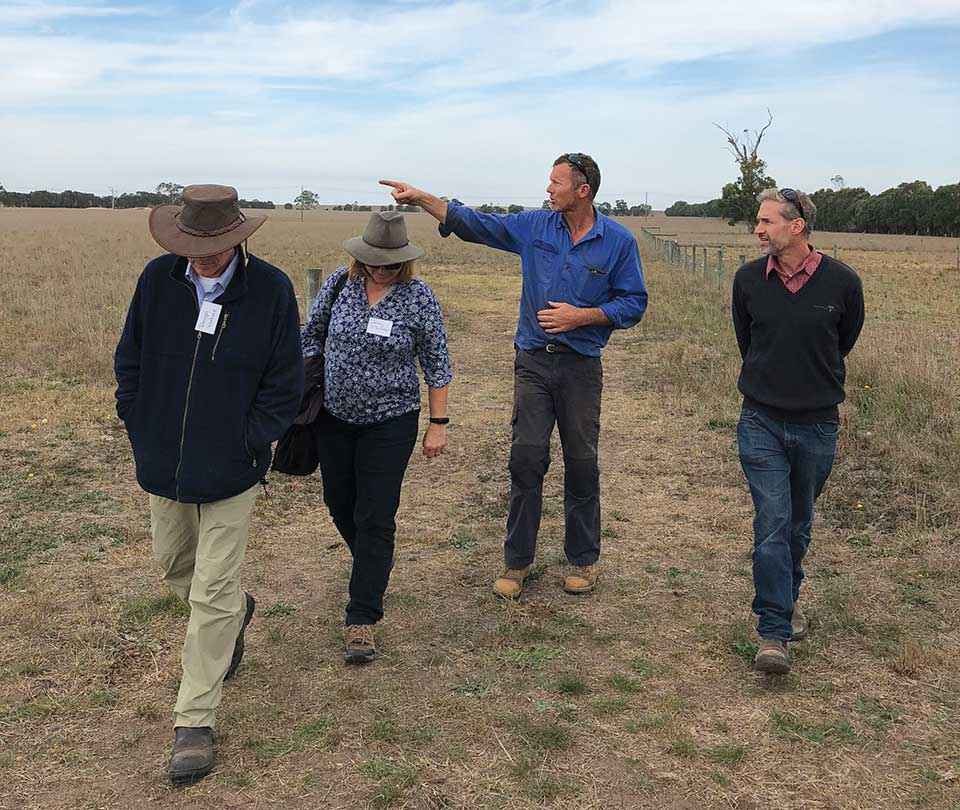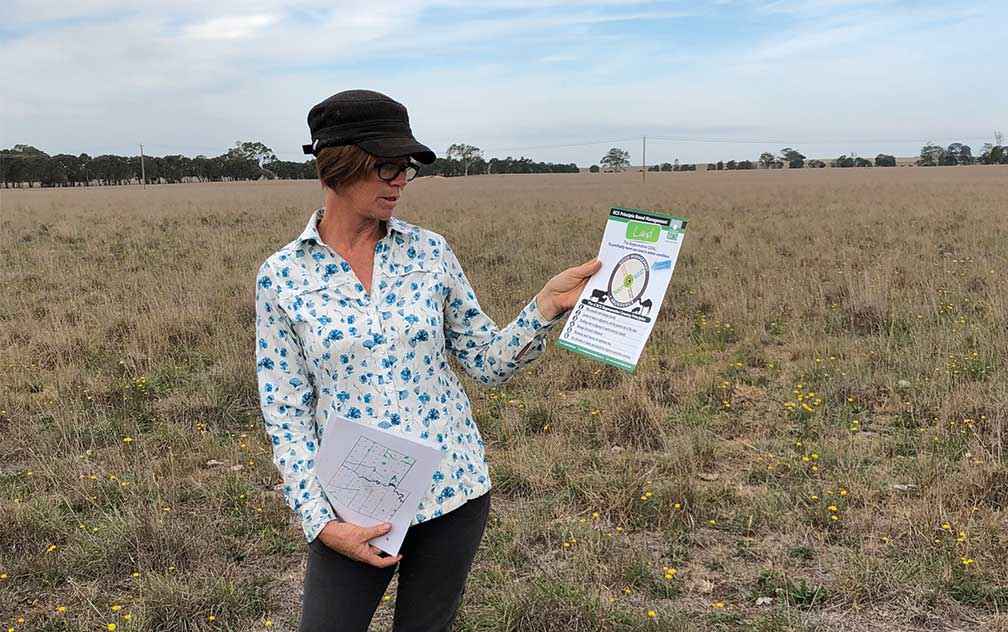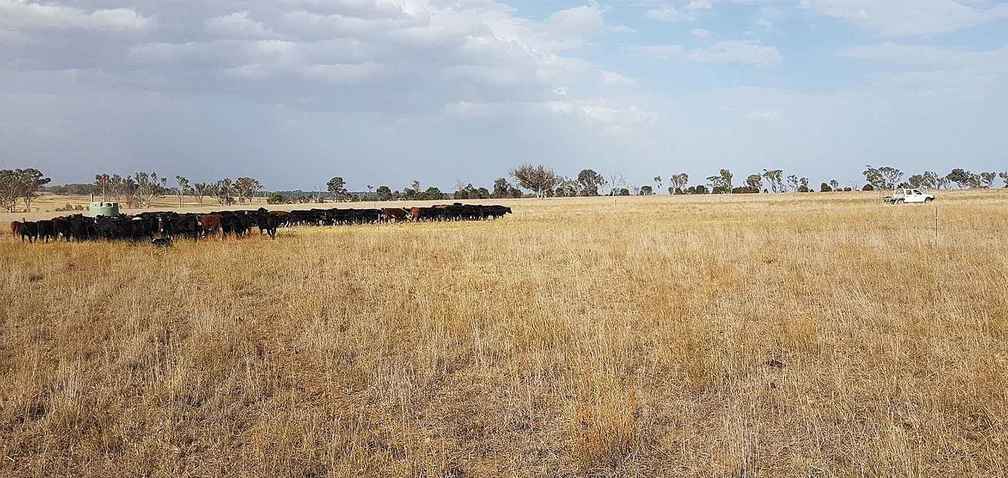Victorian Landcare Magazine - Spring 2018, Issue 73

Perry Bridge farmers Jen Ribolli and David and Ruth Read take a regenerative approach to pasture management. Over the last 16 years the family’s beef and sheep farm, Woodcote, has pioneered innovative techniques in soil health and perennial pastures with impressive results.
Perry Bridge farmers Jen Ribolli and David and Ruth Read take a regenerative approach to pasture management. Over the last 16 years the family’s beef and sheep farm, Woodcote, has pioneered innovative techniques in soil health and perennial pastures with impressive results.
Jen recalls the amount of time her father spent on weed management, feeding out and fertilising when she was growing up on the farm.
“It didn’t feel right,” Jen said. “We felt there had to be a better way.”
The prospect of decreasing rainfall provided strong motivation for change.
“We’ve seen a lot of drought through here. I don’t like to see paddocks blowing dust,” Jen said.
Jen, David and Ruth attended workshops and programs organised by the Maffra and District Landcare Network and the West Gippsland CMA to explore other approaches to farm management.
“We had access to some very good educators – people with a lot of experience in holistic management and soil health,” explained Jen.
“We learned about dividing paddocks into smaller lots and rotating the stock to allow the pasture to recover. We started to focus on the function of living soil and understanding the relationship between the health of soil and pasture.”
"Jen recalls the amount of time her father spent on weed management, feeding out and fertilising when she was growing up on the farm."
Holistic grazing principles
According to David, the first change they made was moving to cell grazing.
“It didn’t get us where we wanted to be. We were getting good production, but not the finish we wanted on the stock to get them to a suitable market weight. Then, through a grazing management course, we learned about a holistic approach to grazing that focused on a long recovery period for the plants,” David said.

Above: Ruth Read explains regenerative grazing principles.
By adopting the new principles, they increased perennial pasture, which now covers 80-90 per cent of the property. The farm’s original 25 paddocks were divided up into 88 smaller lots, with large mobs feeding in small areas, while the rest of the property recovered. Moveable electric fences created wagon-wheel divisions in the larger paddocks, allowing stock to be rotated around central watering points.
“Stock density is a way of managing ground cover and diversity,” said Jen. “We currently have around 30 different plant species. We manage the weeds when we need to, but weeds can show us what’s going on with our management.”
In this year’s challenging conditions, the results are clear to see.
“In late April, after a week of 30-degree temperatures, with a howling northerly and topsoil blowing across much of the district, we shifted a mob of cattle without raising any dust. That demonstrates the benefits of managing your ground cover,” David said.
Despite a hot and dry summer there is still plenty of feed for their stock and a solid cover of perennial grasses.
“The perennial grasses still have active solar panels and the soil and its microbes are protected with a litter layer. The stock has enough to eat and keep performing and that creates turn-over for our business,” David said.

Above: Despite a hot and dry summer, there’s no dust in sight as cattle are moved on the Perry Bridge property.
Every 12 months the Woodcote team meet up with their grazing group, made up of farmers from across Australia. Firm friendships have been made and it’s an opportunity to share ideas and compare the results of grazing management on different farms in different climates. Workshops from grazing experts challenge established knowledge and encourage the group to trial new approaches.
“We wanted to have a neat formula, but you need that chaos in there. That chaos is some new learning we added to our system in the last two years. We match our stock to slightly below our carrying capacity, so that gives us a bit of flexibility. Even if we get it wrong, the system is resilient, we know how to fix it and how to let the land recover,” Jen said.
"Despite a hot and dry summer there is still plenty of feed for their stock and a solid cover of perennial grasses."
This project is part of the Healthy Soils Sustainable Farms initiative supported by the West Gippsland CMA with funding from the National Landcare Program.
Eleanor McKay is Communications and Marketing Project Officer for the West Gippsland CMA.
For more information visit https://www.wgcma.vic.gov.au/for-landholders/gippsland-soil-trials
Access the magazine's index to search for other stories by author, title, and subject, here.

Above: